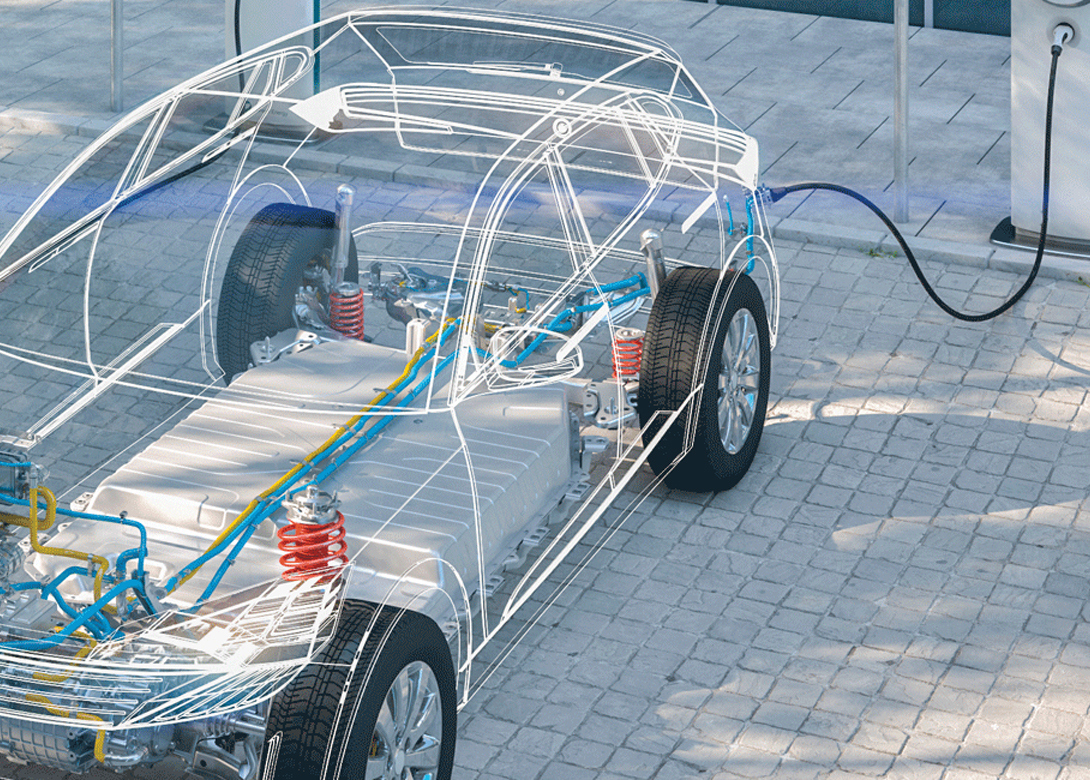
By Andrew Fletcher, director of plastics & rubber (commercial & technical), TR Fastenings Ltd
As the global momentum of electric vehicle (EV) production continues at pace, automotive manufacturers are increasingly turning to alternative component materials to help improve the overall efficiency of electric vehicles. Following this trend, there has been an increase in the demand of plastic components.
With government regulations on vehicle emissions a key driver for EV growth, most automotive manufacturers are now looking at using plastics as base materials to build automotive parts. Plastics and composites have been used in vehicles for decades, mainly due to their lightweight properties which can be 30% to 50% less compared to metal. Today, lightweight plastics can make up 50% of a vehicle’s volume, but only 10% of its weight. Therefore, it is a natural development that plastic components are being incorporated into electric and hybrid vehicles. This helps to aid offsetting the weight of electric motors and battery housings and provides the performance and efficiency.
The perfect material for design teams
There are further benefits with plastic components, including their exceptional electrical and thermal insulation qualities, and its resistance to corrosion. For those in the design field, plastic remains an extremely flexible material, one that can be incorporated into even the most complex components with relative ease and freedom. And for high volume production, an important factor as EV production continues to increase, it’s possible to remain pleasingly cost-effective.
In addition, it’s worth noting that the more common plastic components can not only be produced in high quantities; they can also be manufactured more cost effectively, benefit from shorter lead times and are less wasteful. Metal components, which have been widely used in car manufacture, are generally unable to offer such benefits. This leads to them becoming more marginalised in the automotive industry in general, and the EV sector in particular.
The advantages of plastic components will of course inevitably be accompanied by challenges, but these are becoming more inconsequential. For example, plastic is limited in its torsional stiffness, as well as its impact and punch resistance. There are heat resistance and flammability issues that also need to be considered.
A hurdle the industry is acutely aware of is achieving the necessary levels of trust in the materials in order to change design practices towards using non-metallic materials. Overall, however, concerns around using plastic are outweighed by the various advantages that it can clearly offer.
Application versatility
Currently, the most common plastic applications in EV’s include instrument panels, module housings, breakers and switches, battery trays, trim fasteners, cooling system components and crash protection systems. Given the flexibility of plastic as a manufacturing material, and of course its lightness, it’s understandable that designers are incorporating plastic even more frequently now.
In certain applications, metal components can be incorporated into plastic mouldings to help achieve the required structural performance. Compression limiters are a good example of this. They are used extensively in composites and plastic mouldings as through holes to help reduce the stress generated by conventional fasteners. Traditional threaded fasteners can generate a great deal of compressive stress during their everyday use, but metal compression limiters can protect against damage without compromising on the integrity of the materials involved. Demand for compression limiters has mainly been driven by the automotive sector.
The drive towards energy efficiency
Going forwards, it’s easy to imagine plastic components, their mountings and their housings all taking on an even more crucial role in the design of electric vehicles. Battery ranges between charges are already important, of course, and they will need to continue to improve. Keeping vehicles on the lighter side, perhaps with increased usage of reinforcing materials such as glass and carbon fibre, will inevitably lead to further gains in the drive towards energy efficiency levels that were previously thought unachievable.
One of the challenges facing TR Fastenings design team has been the need for components that are capable of maintaining maximum performance under stress. The integrity of bends and joints under the most intense pressure is a must in EVs, and that remains a high priority for product developers and designers. TR Fastenings has been actively involved in component development in recent years and will continue to work closely with manufacturers on products designed to dovetail perfectly with their need for innovation.

Having spent a decade in the fastener industry experiencing every facet – from steel mills, fastener manufacturers, wholesalers, distributors, as well as machinery builders and plating + coating companies, Claire has developed an in-depth knowledge of all things fasteners.
Alongside visiting numerous companies, exhibitions and conferences around the world, Claire has also interviewed high profile figures – focusing on key topics impacting the sector and making sure readers stay up to date with the latest developments within the industry.
Don't have an account? Sign Up
Signing up to Fastener + Fixing Magazine enables you to manage your account details.